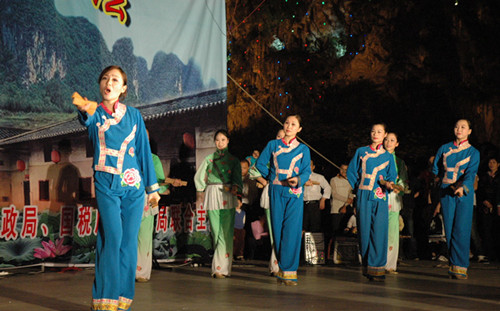The Ballads of Meizhou
As Hakka culture, a branch of the Han ethnic group, spread throughout southern China during the Jin Dynasty (AD 265 – 420), along with it traveled the poetry and ballads of nomadic life and love.
The Hakka dialect shares many phonetic similarities with that of modern day Cantonese, so it is no wonder that the majority of the 80 million Hakka people, which have spread across the globe, live in the southern Chinese provinces of Guangdong, Fujian and Jiangxi.
The city of Meizhou in Guangdong, is considered the center for Hakka dialect and culture. Written during the time of the Song Dynasty, the Ballads of Meizhou share many similarities with ancient Chinese poetry and hark back to the Hakka's origins at what is considered the cradle of Han culture – Zhongyuan (a central plain in modern day Henan province).
The Ballads of Meizhou are a harmonious blend of rhythm and some 100 vocal tones, which combine to tell the many stories of the people. Passed down in a purely oral tradition, the music utilizes a full gamut of octaves, pitch and tempo.
As with most cultures, a central theme of the music is love, with many songs sung about Hakka boys falling for their lovers, or "xi mei", which translates to little sister.
The Ballads of Meizhou form an important part of Hakka culture and greater attempts are being made to preserve and protect the tradition. As a part of the wider Chinese story, the Ballads of Meizhou are a rich source material to understand the literature, art, sociology, history, linguistics, folk lore and religion of times long passed by, and have long been of great interest to scholars.
 |
| Performance of the Ballads of Meizhou [Photo/meizhou.gov.cn] |



 Print
Print Mail
Mail

